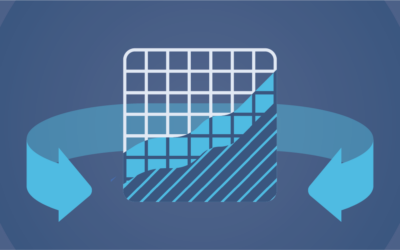In an era marked by heightened awareness of environmental sustainability, industries across the globe are increasingly embracing green practices to mitigate their carbon footprint and reduce their impact on the planet. Among these industries, data centers – the backbone of our digital infrastructure – are under mounting pressure to adopt sustainable practices that align with global environmental goals.
The Rise of Data Center Energy Consumption
The increasing demand for digital services, cloud computing, and big data analytics has led to a steady rise in data center energy consumption in recent years.
However, this unprecedented growth comes with a hefty energy cost, as data centers require substantial amounts of electricity to power servers, cooling systems, and other critical infrastructure. The rise of data center energy consumption not only strains power grids and drives up operational costs but also raises environmental concerns due to increased carbon emissions and energy usage. To address these challenges, organizations are seeking innovative solutions to improve data center energy efficiency, reduce environmental impact, and ensure sustainable growth in the digital era.
According to estimates from organizations like the U.S. Department of Energy (DOE) and the International Energy Agency (IEA), data centers globally consume anywhere from 1% to 3% of total electricity generation. In some regions, such as the United States and Europe, this percentage may be even higher.
Data Center Cooling Costs
The portion of data center energy costs related to cooling can vary depending on factors such as the design of the facility, climate conditions, and cooling system efficiency. However, cooling typically accounts for a significant portion of total energy consumption in data centers, often ranging from 30% to 50% or more of the total energy usage.
Data centers generate heat due to the operation of IT equipment such as servers, storage devices, and networking gear. To maintain optimal operating conditions and prevent equipment overheating, data centers require robust cooling systems to remove excess heat from the environment. These cooling systems may include air conditioning units, precision air handlers, chilled water systems, or direct liquid cooling solutions.
The cooling requirements of a data center are influenced by factors such as server density, equipment layout, airflow management, and environmental conditions. In warmer climates or during periods of high ambient temperatures, cooling systems may need to work harder to maintain the desired temperature levels, leading to increased energy consumption and higher cooling costs.
3 Strategies for Reducing Data Center Cooling Costs
There are three main strategies and best practices for enhancing energy efficiency and sustainability in data center operations- optimizing hardware, optimizing airflow and optimizing cooling.
Optimizing Data Center Hardware
-Upgrading to energy-efficient servers, storage devices, and networking equipment with advanced power management features can significantly lower energy consumption. Modern hardware solutions are designed to operate more efficiently, utilizing technologies such as multi-core processors, low-power components, and intelligent power management systems to maximize performance while minimizing energy usage.
-Virtualization, consolidating multiple virtual servers onto a single physical server, allows organizations to increase server utilization rates and reduce the number of underutilized or idle servers. This consolidation not only saves energy by reducing the overall power consumption of hardware but also reduces the physical footprint of the data center, leading to additional cost savings in terms of space and cooling requirements.
Optimizing Data Center Airflow Management
-Optimizing airflow management is essential for reducing data center energy costs and improving overall efficiency. Proper airflow management ensures that cool air is effectively delivered to IT equipment while removing hot air from the environment, thus maintaining optimal operating temperatures and preventing hotspots within the data center.
-Implementation of hot aisle/cold aisle containment systems is critical. This approach involves arranging server racks in alternating rows with cold aisles where cool air is supplied and hot aisles where hot air is exhausted. Containment barriers, such as aisle-end doors, ceiling panels, and rack-level enclosures, help isolate cold and hot air streams, preventing them from mixing and improving overall airflow efficiency. By containing hot air and directing it to cooling units, organizations can reduce the workload on cooling systems and improve energy efficiency.
-Optimizing equipment layout and airflow patterns within the data center can further enhance airflow management. Strategic placement of server racks, networking equipment, and other IT infrastructure components can minimize airflow obstructions and ensure uniform distribution of cool air throughout the facility.
-Sealing cable cutouts, floor openings, and other air leaks within the data center can prevent the escape of conditioned air and the infiltration of hot air, thereby improving overall cooling efficiency.
-Deploying airflow management tools and sensors can provide real-time monitoring and insights into airflow patterns, temperature levels, and air quality within the data center. By collecting and analyzing data on airflow metrics, organizations can identify inefficiencies, optimize airflow distribution, and implement targeted improvements to enhance overall cooling efficiency.
Optimizing Data Center Cooling Production
Cooling optimization plays a critical role in improving data center efficiency. Chiller plants are responsible for producing chilled water, which is circulated through the data center to remove heat from IT equipment and maintain optimal operating temperatures. By optimizing chiller plant operations, organizations can further reduce energy consumption, enhance cooling efficiency, and improve overall system performance.
-Installing variable speed drives (VSDs) on chillers and pumps allows for precise control of equipment speed and output. By matching cooling capacity to actual demand, VSDs help reduce energy usage and improve system efficiency, particularly during partial load conditions.
-Leveraging free cooling solutions, such as economizers, allows data centers to reduce reliance on mechanical chillers and take advantage of lower ambient temperatures to cool the facility. By integrating free cooling with traditional chilled water systems, operators can significantly reduce energy consumption and operating costs.
-Proper water treatment is essential for maintaining the efficiency and longevity of chilled water systems. Regular maintenance and optimization of water treatment processes, including filtration, chemical treatment, and corrosion control, help prevent fouling and scale buildup, ensuring optimal system performance and energy efficiency.
-Chiller Plant Optimization: Chiller plants are the primary energy consumers in data center cooling systems. Effective chiller plant optimization solutions adjust chiller plant operations and airflow management based on real-time parameters to minimize energy consumption and maximize cooling performance.
As the demand for data center services continues to grow, so does the urgency of addressing the environmental challenges associated with their operation. HVAC optimization solutions, such as chilled water plant optimization, offer a practical and effective means of reducing energy consumption, lowering environmental impact, and enhancing the overall sustainability of data center operations.




